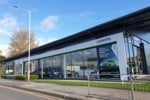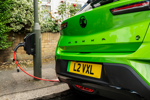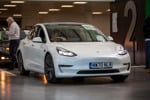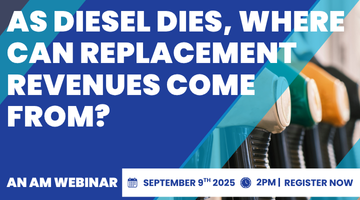Last year’s commentary on the AM100 opened with the phrase “another record year”. Well, you have done it again: Total industry volume (TIV) reached new heights at nearly 2.7 million units; AM100 turnover reached £63.3 billion, an increase of 10% on last year’s record of nearly £57.5bn; AM100 groups now employ more than 120,000 staff: they sold 2.75 million new and used cars and LCVs; and the AM100 controls almost 3,000 outlets.
Perhaps most significantly, acquisitions and disposals mean a record £3.1 billion of turnover changed ownership last year.
There were some significant moves in 2016 and the early part of 2017, both in scale and in strategic terms:
♦ Marshall’s acquisition of Ridgeway in May 2016, included in last year’s AM100, was one of the largest deals this side of the millennium, representing a significant increase in scale, mainly with existing brand partners.
♦ Group 1 continued its charge up the AM100 table, adding Spire and City Motor Holding’s Ford operation.
♦ Sytner’s purchase of CarShop stood out more in terms of strategic direction than scale, adding a
significant used car operation to the largely premium franchised business. A number of groups have recently increased their focus on used car operations.
♦ Lookers continued to grow its premium portfolio with Drayton Group’s Mercedes-Benz sites and some of Knights’ BMW sites.
♦ Jardine, after some disposals (Toyota to Steven Eagell) added to its Jaguar Land Rover relationship by acquiring Colliers and strengthening its BMW holding by buying Carrs.
♦ Hendy, after a number of years of organic growth, bought Lifestyle and jumped 10 places in the table.
♦ Swansway expanded its existing relationship with Audi by adding Thompson, moving turnover close to three quarters of a billion pounds.
♦ Steven Eagell acquired a number of Lexus and Toyota sites, taking it from one site at the beginning of the century to 12 sites today.
♦ Motorline continued its growth, acquiring Westlands.
♦ VT Holdings added Wessex to its existing businesses, Colt Cars and Griffin Mill.
♦ Vertu added Greenoaks Mercedes.
♦ Snows added three sites from City Motor Holdings.
♦ Most recently, Super Group UK added Essex Auto Group to its Allen Ford business, producing the largest increase of all the recent deals, in percentage terms.
It is a long list, which many may assume changes the landscape of the AM100. The acquisitions are significant for each business involved.
Sytner is the new number one, momentous in that Pendragon has been number one for as long as a lot of people can remember. But it only means a one-place gain. Lookers remains in third, Arnold Clark in fourth. Vertu, despite some further growth, just swaps places with Inchcape.
Elsewhere the moves are rather more dramatic – Swansway, Steven Eagell, Hendy, Super Group, Hatfields all rose between 10 and 14 places on the back of their acquisitions.
Despite all the records, AM100 turnover is up only 10% year on year, less than last year’s increase. In fact, less than the growth in any of the past three years. In the same period, the private new car market was down 0.2%.
Turnover growth by percentage and volume
| Rank 2017 | Group | Turnover growth (%) | Rank 2017 | Group | Turnover growth (£) |
|---|---|---|---|---|---|
| 33 | Super Group UK | 60.60% | 1 | Sytner Group | 972,000 |
| 7 | Marshall Motor Holdings | 58.90% | 7 | Marshall Motor Holdings | 823,415 |
| 13 | Mercedes-Benz Retail Group UK | 49.50% | 3 | Lookers | 763,841 |
| 19 | Swansway Garages | 47.10% | 13 | Mercedes-Benz Retail Group UK | 379,292 |
| 31 | Hendy Group | 37.50% | 5 | Inchcape Retail | 314,581 |
| 24 | Rybrook Holdings | 33.80% | 4 | Arnold Clark Automobiles | 305,720 |
| 48 | City West Country | 32.60% | 10 | Group 1 Automotive | 266,579 |
| 56 | Hatfields | 31.70% | 19 | Swansway Garages | 224,000 |
| 28 | Dick Lovett Group | 29.40% | 8 | Jardine Motors Group | 218,248 |
| 32 | Lloyd Motors | 28.00% | 33 | Super Group UK | 181,684 |
| 79 | Steven Eagell | 27.40% | 24 | Rybrook Holdings | 145,186 |
| 29 | Motorline | 26.60% | 31 | Hendy Group | 133,740 |
| 78 | Brindley Garages | 25.60% | 11 | Listers Group | 127,259 |
| 61 | Sandown Motor Group | 24.00% | 6 | Vertu Motors | 121,081 |
| 1 | Sytner Group | 22.60% | 28 | Dick Lovett Group | 117,901 |
| 51 | Beadles Group | 22.30% | 29 | Motorline | 108,897 |
| 10 | Group 1 Automotive | 22.20% | 32 | Lloyd Motors | 106,475 |
| 3 | Lookers | 20.90% | 14 | Greenhous Group | 104,705 |
| 35 | Sinclair Group | 20.00% | 16 | Renault Retail Group | 100,000 |
| 60 | Snows Motor Group | 19.30% | 2 | Pendragon | 83,100 |
| 45 | Westover Group | 18.90% | 48 | City West Country | 74,055 |
| 89 | Foray Motor Group | 18.80% | 35 | Sinclair Group | 73,042 |
| 65 | Caffyns | 16.20% | 23 | Helston Garages Group | 69,000 |
| 67 | Currie Motors | 15.90% | 56 | Hatfields | 66,143 |
| 16 | Renault Retail Group | 15.60% | 12 | JCT600 | 60,305 |
The top 10 groups account for 49% of AM100 turnover, up from 47% last time and only up from 46% five years ago. The top 20 groups now cover 63% of AM100 turnover, vs 62% last year and 61% five years ago.
The entry point to the AM100 has dropped from £130m last year to £126m this year. This is one effect of the acquisitions – groups leaving the list through takeover by a larger group create “vacancies”, which will by definition be filled by smaller groups. However, there have been years of major acquisitions before, and the threshold has still risen.
Some commentators have observed that we are reaching “peak car”. Maybe we are also reaching “peak group”.
Whether or not that is true, what is unavoidable is my conclusion that massive consolidation has not arrived. However much commentators who routinely talk about “massive consolidation” and “massive change”, it is not supported by fact. There is a very slow drift towards less fragmentation, but looked at over 20 years, it is not massive. Neither has there been any notable change in the business model.
Profit per outlet
| Rank 2017 | Group | Profit per outlet (£) | Rank 2016 | Group | Profit per outlet (£) | Rank 2015 | Group | Profit per outlet (£) |
|---|---|---|---|---|---|---|---|---|
| 52 | Porsche Retail Group | 1,920,400 | 51 | Porsche Retail Group | 1,767,600 | 58 | CEM Day | 1,125,545 |
| 64 | CEM Day | 1,076,364 | 63 | CEM Day | 1,203,182 | 86 | Thompson Motor Company | 889,333 |
| 56 | Hatfields | 984,091 | 82 | Thompson Motor Company | 957,000 | 22 | Harwoods | 819,188 |
| 1 | Sytner Group | 923,077 | 64 | City West Country | 951,875 | 2 | Sytner Group | 751,880 |
| 39 | Halliwell Jones Group | 751,000 | 2 | Sytner Group | 872,180 | 74 | Currie Motors | 709,600 |
| 59 | Peoples | 705,100 | 35 | Dick Lovett Group | 810,000 | 69 | SG Smith Group | 680,000 |
| 28 | Dick Lovett Group | 702,938 | 29 | Peter Vardy | 792,857 | 35 | Dick Lovett Group | 667,500 |
| 69 | Stephen James Group | 701,143 | 23 | Harwoods | 752,875 | 57 | Porsche Retail Group | 640,000 |
| 22 | Harwoods | 687,941 | 68 | Hatfields | 676,300 | 94 | Marsh Wall | 612,500 |
| 48 | City West Country | 675,615 | 4 | Arnold Clark Automobiles | 627,443 | 4 | Lookers | 609,016 |
| 36 | Peter Vardy | 671,733 | 37 | Halliwell Jones Group | 576,600 | 3 | Arnold Clark Automobiles | 585,261 |
| 4 | Arnold Clark Automobiles | 646,752 | 59 | Peoples | 552,000 | 18 | John Clark Motor Group | 556,818 |
| 67 | Currie Motors | 580,800 | 3 | Lookers | 541,176 | 72 | Jacksons Bournemouth | 530,857 |
| 3 | Lookers | 577,439 | 49 | Drayton Motor Group | 524,500 | 71 | Knights Group | 520,500 |
| 71 | William Morgan | 517,333 | 1 | Pendragon | 502,500 | 73 | Hatfields | 499,545 |
| 5 | Inchcape Retail | 515,173 | 98 | Marsh Wall | 479,750 | 5 | Inchcape Retail | 493,694 |
| 2 | Pendragon | 511,111 | 67 | Stephen James Group | 476,714 | 30 | Peter Vardy | 491,438 |
| 61 | Sandown Motor Group | 492,375 | 92 | Steven Eagell | 470,250 | 33 | Spire Automotive | 458,059 |
| 26 | Eastern Western Motor Grp | 479,167 | 11 | JCT600 | 468,354 | 64 | City West Country | 456,818 |
| 9 | TrustFord | 444,778 | 28 | Swansway | 461,111 | 55 | Drive Motor Retail | 452,700 |
If this represents a trend – “peak car” being shorthand for market saturation – then there is a compelling reason to look for the overdue change in the business model.
There is plenty to go for. Used car penetration for franchised dealers is poor, most focusing on the younger, lower-mileage sector that represents a minority of the market. The proportion of service and repair work retained by the franchised sector is also a fraction of what is available.
There may be increased emphasis on service work and on used car sales, but it doesn’t show through in results, with one exception. The total hours sold reported this year is, by and large, significantly greater than those reported last year.
However profitability has, for many, declined and the early reports on 2017 indicate it is getting even tougher.
Profit before tax – top performers
| Rank 2017 | Group | PBT (£'000) | Rank 2016 | Group | PBT (£'000) | Rank 2015 | Group | PBT (£'000) |
|---|---|---|---|---|---|---|---|---|
| 4 | Arnold Clark Automobiles | 125,351 | 4 | Arnold Clark Automobiles | 110,387 | 3 | Arnold Clark Automobiles | 107,282 |
| 1 | Sytner Group | 121,000 | 2 | Sytner Group | 105,000 | 2 | Sytner Group | 90,000 |
| 3 | Lookers | 77,100 | 1 | Pendragon | 70,100 | 4 | Lookers | 62,300 |
| 2 | Pendragon | 75,400 | 3 | Lookers | 68,600 | 1 | Pendragon | 60,200 |
| 5 | Inchcape Retail | 49,476 | 5 | Vertu Motors | 25,825 | 7 | Jardine Motors Group | 24,780 |
| 6 | Vertu Motors | 32,516 | 11 | JCT600 | 18,616 | 6 | Vertu Motors | 21,000 |
| 7 | Marshall Motor Holdings | 25,400 | 31 | Glyn Hopkin | 16,158 | 12 | JCT600 | 18,565 |
| 9 | TrustFord | 18,975 | 7 | Marshall Motor Holdings | 15,400 | 11 | Listers Group | 14,143 |
| 11 | Listers Group | 16,027 | *Acq | Ridgeway Group | 14,845 | 23 | Helston Garages Group | 13,500 |
| 12 | JCT600 | 13,604 | 24 | Helston Garages Group | 14,700 | 10 | Marshall Motor Holdings | 13,453 |
We have often commented that businesses prosper when customers perceive that a business adds value at every touch point. It is people who add value. Therefore, a reduction in staff leads to a reduction in value, promoting or accelerating a downward spiral.
However, you cannot just add staff – that would lead to an unsustainable cost base. What is required is to identify the waste in the organisation’s processes, eliminate it and therefore allow the same number of staff to deliver more value.
This is not happening. If it were, the increasing number of cars and hours sold would be delivered by the same number of people (or the numbers would increase more slowly). Customer service would not suffer, costs would not rise and the AM100 would make more money.
For example, the number of cars sold per employee has been stable at about 24 units for year after year.
PIERS TRENEAR-THOMAS
Notes on the AM100
♦ Information in the AM100 is derived from responses to our questionnaire or from statutory accounts. Where no questionnaire has been returned and statutory accounts are not sufficiently current, an estimate is made.
♦ Profits are adjusted, where information is available, to eliminate exceptional items. Profit percentages are calculated on the unadjusted turnover numbers. Turnover is net of VAT.
♦ In order for the table to be as current as possible, information in the public domain, principally relating to acquisitions and disposals, is used to update questionnaire responses or statutory accounts.














Login to comment
Comments
No comments have been made yet.